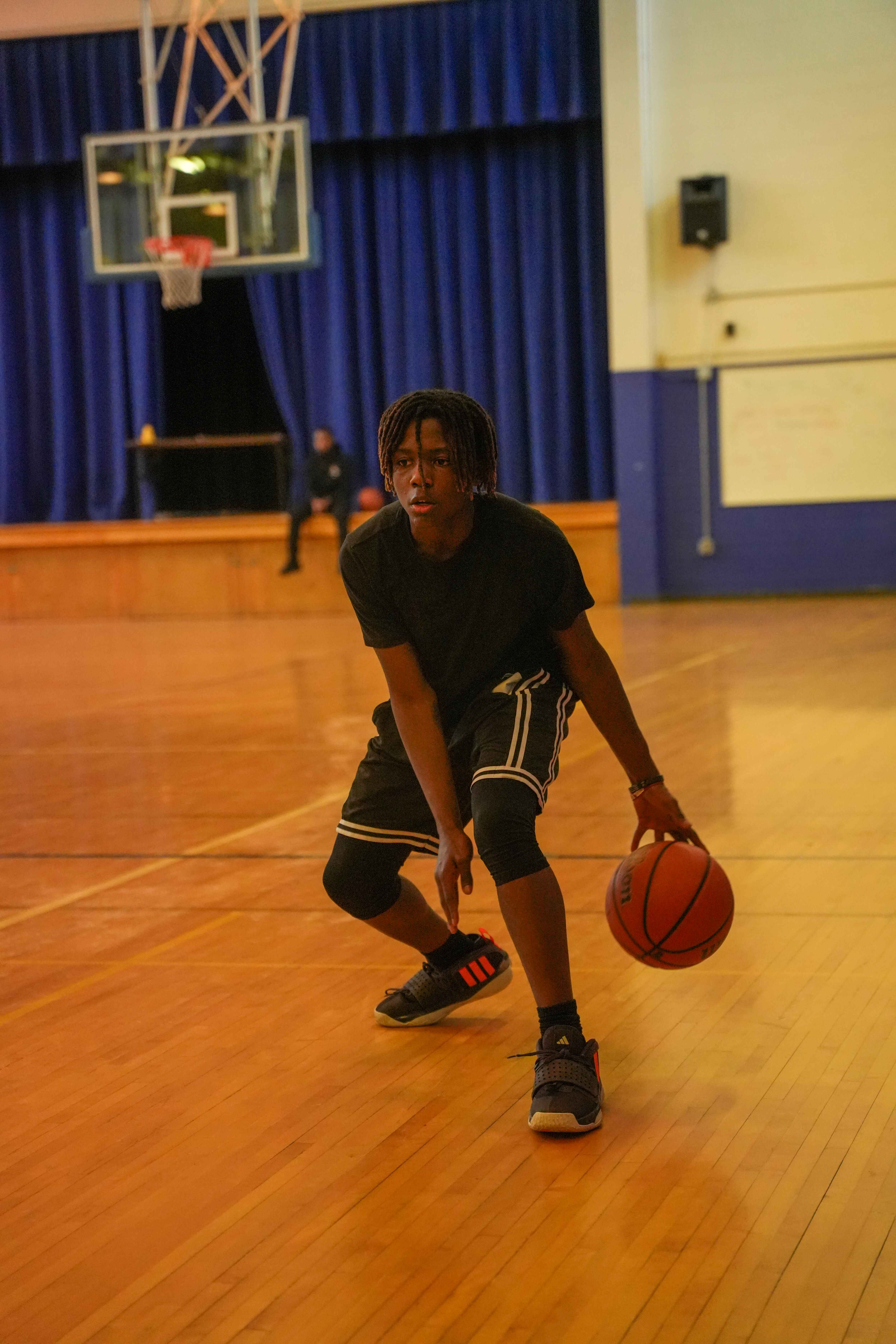The Key(s) to Achieving your Basketball Goals

In basketball, goal setting isn't just a tactic; it's the playbook for success. NBA stars swear by it. Setting SMART goals – specific, measurable, achievable, relevant, and time-bound – can transform a player's performance. In this article, we'll explore why goal setting matters in basketball and share practical tips to equip your young players as they progress in their careers.
Setting SMART goals
Setting SMART goals is crucial for basketball players to chart their path to success. SMART stands for Specific, Measurable, Achievable, Relevant, and Time-bound. Let's break down what each of these means:
- Specific: Goals should be clear and precise. Instead of saying, "I want to improve my shooting," a definitive goal would be, "I want to increase my three-point shooting percentage by 10% this season."
- Measurable: Goals should have quantifiable criteria for success. This means your child can track their progress and know when they've achieved their goal. For example, if their goal is to improve their dribbling skills, they could measure progress by the number of dribbles they can do in 30 seconds without losing control.
- Achievable: Goals should be challenging but realistic. Setting goals that are too far-fetched can lead to frustration and demotivation. For instance, if your child is a beginner, setting a goal to make it to the NBA next year might not be achievable. Instead, they should focus on smaller, attainable milestones like making the starting lineup for their school team.
- Relevant: Goals should align with your child’s overall objectives and aspirations. They should ensure that their basketball goals are consistent with their long-term vision for their athletic career. If their ultimate goal is to become a point guard, working on their passing and court vision would be more relevant than focusing solely on their rebounding skills.
- Time-bound: Goals should have a deadline or timeframe for completion. This adds urgency and helps players stay on track. For example, setting a goal to improve their free throw shooting by the end of the month gives your child a specific timeframe to work towards.
In summary, setting SMART goals ensures that basketball players have clear, measurable objectives that are challenging yet attainable. By incorporating specificity and clarity into goal setting, your child can maintain focus, stay motivated, and track their progress effectively throughout their basketball career.
Creating Action Plans
Encourage them to break down their goals into smaller tasks that they can work on step by step. For example, if they want to improve their shooting, they can practice shooting drills regularly and learn from professional players.
They need to prioritize tasks based on what's most important and urgent. By focusing on activities that directly improve their skills or performance in games, they can make the most of their efforts. Good time management is also key. Help them schedule time for basketball practice and stick to a routine.
By following a well-thought-out plan, your child can play with purpose and determination, leading to real improvements in their basketball skills and performance on the court.
Maintaining Motivation
Maintaining motivation is a common challenge for basketball players striving to achieve their goals. Whether it's the hard work of daily practice or setbacks on the court, staying motivated can be tough. However, there are several strategies your child can apply to keep their motivation levels high.
One effective approach is visualization, where players mentally rehearse success scenarios and visualize themselves achieving their goals. When athletes picture themselves reaching their goals, their brain reacts as if they're doing it. This triggers the same neurological pathways used during real play, boosting confidence, focus, and muscle memory. In the end, it makes them better players on the basketball court.
Positive self-talk is another powerful tool, as it helps players overcome self-doubt and stay focused on their strengths and capabilities. Getting support from coaches and teammates can also provide encouragement and accountability, creating a sense of camaraderie that fuels motivation.
It is important to celebrate small victories and progress along the way, too. Recognizing and acknowledging achievements, no matter how small, can keep them feeling positive and motivated in the long run. By incorporating these strategies into their routine, your young players can overcome motivational hurdles and stay driven towards their goals.
Overcoming Obstacles
In the pursuit of their goals, basketball players inevitably face various obstacles that can hinder their progress. Among these challenges are injuries, setbacks, and bouts of self-doubt. Injuries can sideline players and disrupt their training routines, setbacks can shake their confidence, and self-doubt can cloud their belief in their abilities. To overcome these obstacles, encourage your child to develop these mindset stances:
- Resilience: Your child can foster resilience by cultivating a positive mindset. Encouraging self-talk, focusing on strengths, and maintaining perspective during tough times can help them build mental toughness and strengthen resolve.
- Adaptability: To develop adaptability, your child must be open to change and willing to adjust their strategies in response to challenges. They can practice flexibility by experimenting with different approaches and embracing new ideas when facing unexpected hurdles.
- Learning from Failures: Your child can learn from failures by adopting a growth mindset. Instead of dwelling on setbacks, they can analyze what went wrong, identify areas for improvement, and view setbacks as opportunities for growth and development.
- Perseverance and Determination: Consistent effort and determination are essential for achieving long-term success. Your child can cultivate perseverance by setting realistic goals, breaking them down into manageable tasks, and staying committed to their objectives even when faced with adversity.
Review and Adjustment
In basketball, improvement is ongoing and it is necessary for your child to regularly check if their goals match their skills and what’s happening in the game. By checking in often, they can figure out what's going well and what they need to change. By staying proactive, your child can keep themselves motivated even when facing challenges.
Reflecting on past experiences, both successes and failures, helps players learn and refine their goals and strategies. This cycle of review, adjustment, and reflection is key to continuous improvement and success on the court.
Conclusion
Reaching basketball goals isn't just about reaching a destination—it's a journey with ups and downs. In this article, we've talked about setting SMART goals, making plans, staying motivated, overcoming challenges, and checking progress. Goal-setting isn't a one-time thing; it's a process that needs commitment and flexibility. With dedication, your child can achieve their goals and grow on and off the court.
Join us at Ness Basketball to work together and help your child achieve their basketball goals. We are here to provide personalized training tailored to your child’s needs, whether they're aiming to improve their shooting, dribbling, or overall game. Sign your child up for group, private, or team training and let’s reach for the heights!
Summer Basketball Camp 2025
We have the number one basketball camp in Montgomery County, Maryland and you can check it out here: Ness Basketball Summer Camp 2025
Sign up today for a free practice session
If your child is ready to improve their game, let's get to work.
Sign up

